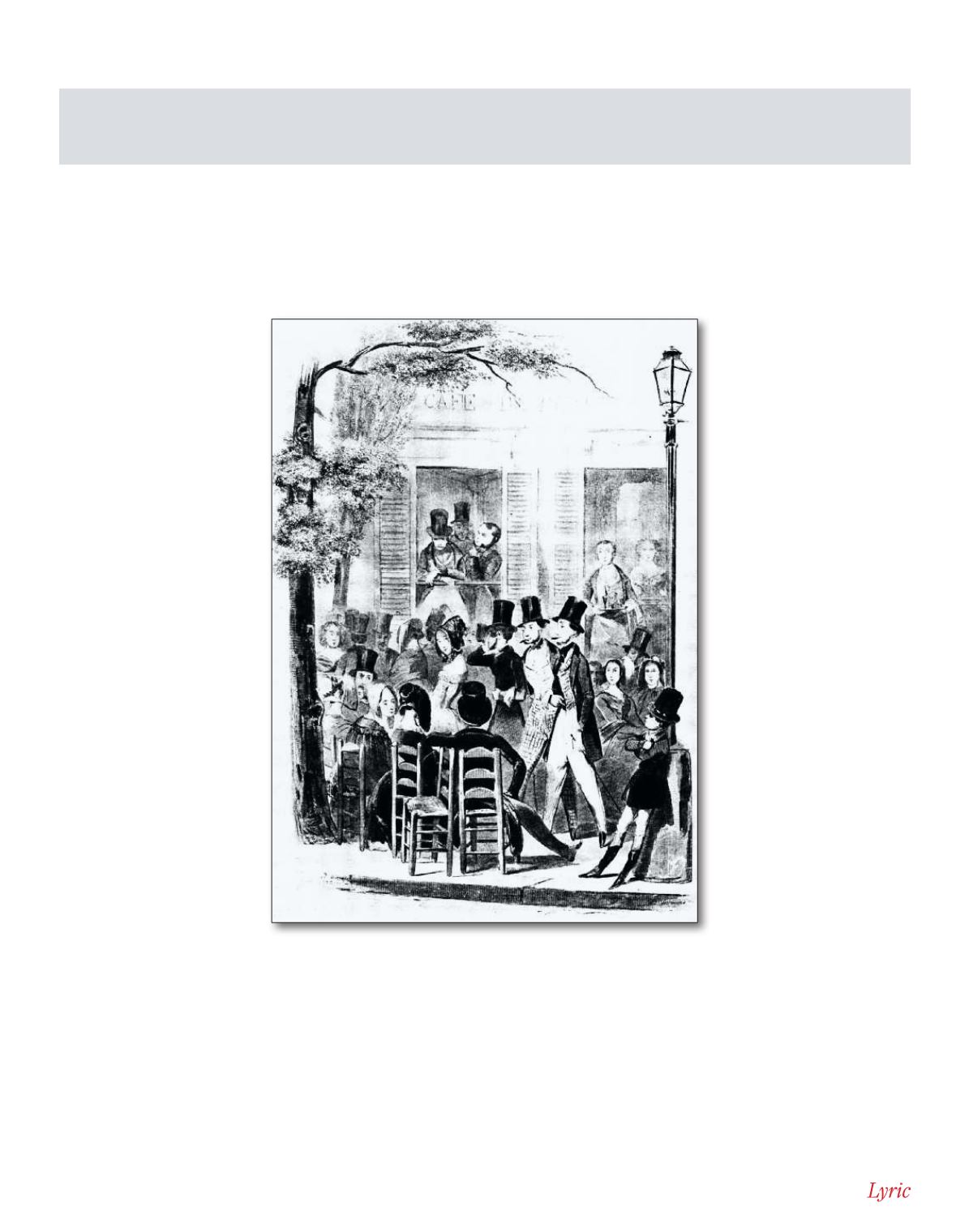
O P E R A N O T E S | L Y R I C O P E R A O F C H I C A G O
30
|
October 6 - 20, 2018
T
he scintillating American soprano Geraldine Farrar left
a delightful anecdote regarding her debut at the Opéra
de Monte Carlo in 1904. Farrar was onstage listening to
the tenor of the evening deliver his aria, after which she was to
begin her own. The elegant diva had initially been unimpressed by
her colleague’s appearance, noting he was “was clad in shrieking
checks, topped by a grey fedora,
yellow gloves, and grasping a
gold-headed cane.” But when he
began to sing, the astonishing
beauty of his voice so enraptured
her she found herself transfixed.
“I forgot all about the theater,
the actions, everything,” Farrar
recalled. “I sat there sobbing like
a child. When my cue came, I
did not hear it. The orchestra
hesitated. My mother, who was
in the wings, waved dramatically
at me. I did not see her. I was
having a beautiful, old-fashioned
cry. Then the prompter arose
from his seat and said 'Well,
Miss Farrar, are you going to
sing or not?'” The tenor in
question was the blazing Italian
supernova Enrico Caruso, and
the opera was Giacomo Puccini’s
La bohème.
Bohème
is among the most
admired of operas. It has been
said that box-office health is a
simple matter of “A, B, C” –
Aida,
Bohème,
and
Carmen.
Bohème
’s
extraordinary popularity was
unimaginable when the opera
first appeared, however. Farrar’s
reminiscence is a treasurable bit
of theatrical nostalgia – but it
also provides a telling glimpse
into an operatic success that may never have occurred had it not been
for the insight and determination of some very influential singers.
The second half of the 19th century was a time of formidable
development in Italian opera. Giuseppe Verdi had boldly transcended
the traditions of bel canto and the structures of opera from earlier in
the century to endow the Italian lyric theater with a level of musical/
dramatic cohesion heretofore unknown. A gritty naturalism had
also crept into the arts; initially through the paintings of Antonio
Mancini and Francesco Paolo Michetti, as well as in literature as
manifested by writer Giovanni Verga. In opera, Pietro Mascagni’s
Cavalleria rusticana
and Ruggiero Leoncavallo’s
Pagliacci
had
defined a new operatic genre, that of verismo, or realism.
It was into this heady milieu that that Puccini made his
early forays into composition. Puccini was born into a venerated
musical family in Lucca; his father, grandfather, great-, and great-
great-grandfather had all held the position of
maestro di cappella
at
the Cattedrale di San Martino.
After graduating from Milan
Conservatory, he composed two
operas,
Le villi
and
Edgar
, neither
of which won success. Then in
1893, Puccini enjoyed a triumph
with
Manon Lescaut
, which
premiered at Turin’s Teatro
Regio. No less an authority than
George Bernard Shaw opined,
“Puccini looks to me more like
the heir of Verdi than any of his
rivals.”
But as any artist can attest,
coming up the second time after
an acknowledged victory is one
of the most dangerous moments
in a career. The world is full
of one-hit wonders. None of
Leoncavallo’s subsequent operas
achieved the success of
Pagliacci
(including his rival version of
Bohème
, which more or less died
on the vine). Puccini knew he
needed to proceed judiciously.
For inspiration, he turned
to French poet Henri Murger’s
Scènes de la vie de Bohème
. Set
in Paris, Murger’s episodic
novella presented a series of
colorful vignettes which related
the escapades of a disparate
group of young people living
a romanticized Bohemian
existence in the Latin Quarter. A stage adaptation by playwright
Théodore Barrière had proven to be wildly successful. Giulio
Ricordi, who commissioned the opera, assigned the team of Luigi
Illica and Giuseppe Giacosa as librettists. As with the play, Illica and
Giacosa took several liberties with Murger’s novel, combining the
characters of Mimì and Francine, and tweaking matters to minimize
similarities to Verdi’s
La traviata
. Puccini viscerally resonated with
the material. “I
lived
that
bohème
,” he enthused, “when there wasn’t
any thought stirring in my brain of seeking the theme of an opera.”
La bohème
premiered at the Teatro Regio on February 1, 1896,
La bohème
and the Wisdom of Singers
By Mark Thomas Ketterson
The Café de Paris, from an 1843 engraving by M. L. Bosredon.








